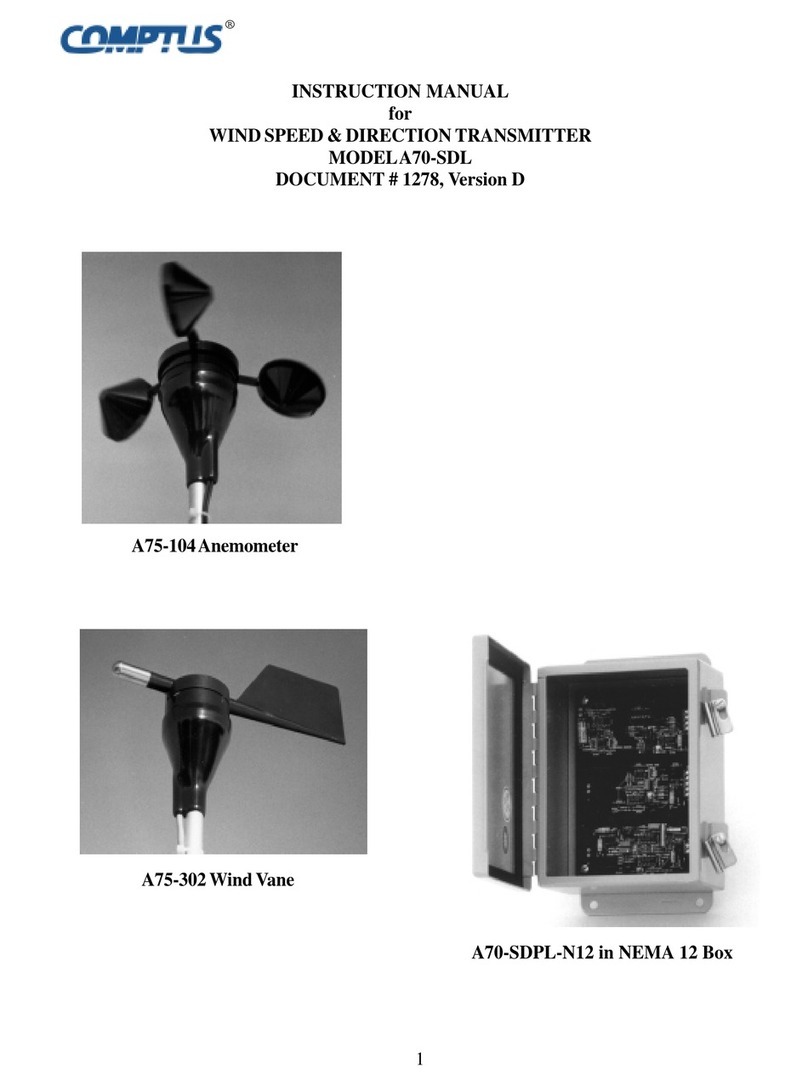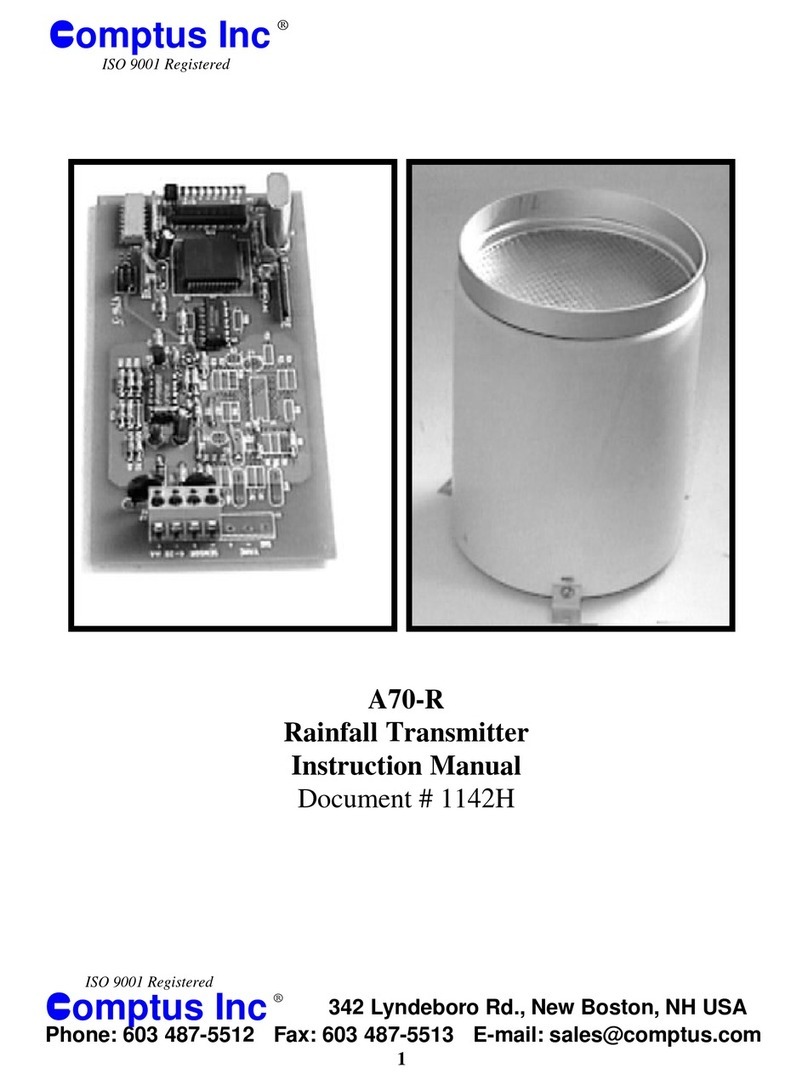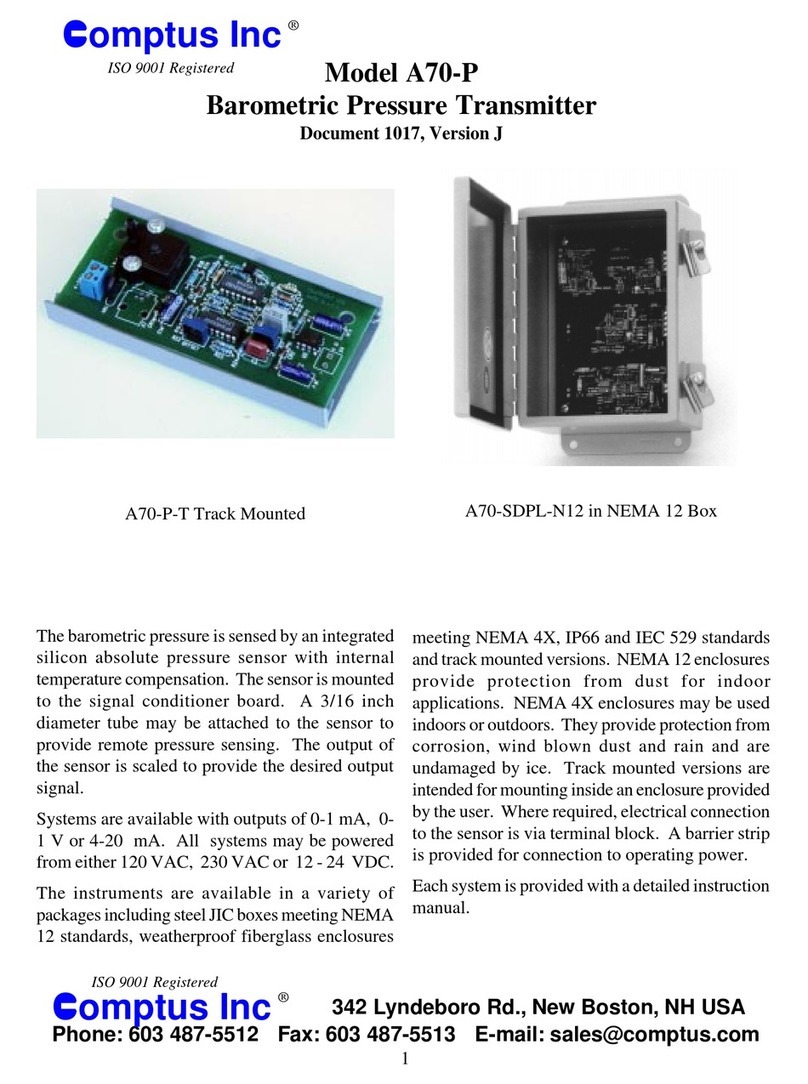
9
Location
Do not install this equipment in the same enclo-
sure with a liquid electrolyte battery unless
ventilation is provided. Various gasses emitted
from the battery will cause both premature and
intermittent circuit failure.
Choose a protected mounting location for the
Transmitter enclosure. Attach it to a back plane
or other supporting structure. Special consider-
ation must be given to installations where the
sensors or electronics will be exposed to strong
radio frequency radiation or strong magnetic
fields. Contact the factory for applications
assistance.
The wind vane should be mounted at the point at
which it is desired to sample the wind. Typi-
cally, it is located as high as feasible and well
clear of obstructions.
Do not mount the wind vane directly above a
vertical wall as this location often has turbulent
air flow.
It may be mounted on an existing structure, on a
natural formation, or on a mast or tower. It is
desirable to mount the vane so that the support-
ing structure will not influence the wind charac-
teristics in its immediate vicinity. If the sensor
is mounted above a roof top or similar building
structure, it should be high enough so that the
wind deflected off the structure will not affect it,
typically 5 to 10 feet or more.
If mounted to the side of a supporting structure it
should be mounted at least ten structure diam-
eters away from the structure in order to take the
sensor out of the disturbed air around the struc-
ture. It should be mounted toward the prevailing
wind, and be positioned so that the influence of
structural members is minimized.
A preferred mounting which is commonly used
is a telescopic tower for installations up to forty
or fifty feet high; a tower commonly used for TV
antenna support, consisting of concentric pieces
oftubing approximatelytenfeetlong,guyedat each
section,issuitable. Abovethisheightself-supporting
orguyed lightweight structural towerscanbeused.
If the “S” mast is to be mounted on a metallic
tower consideration must be given to galvanic
corrosion which occurs between dissimilar
metals. Attachment to galvanized steel towers
using stainless steel hose clamps is acceptable.
For other combinations of metals recommended
practice is to electrically insulate the “S” mast
from the tower with a plastic bushing or sheet.
Alternatively fabricate a “S” mast from the same
material as the tower. This consideration is
especially important in locations exposed to salt
spray and air.
Lightning Protection
The Transmitter electronics has integral metal
oxide varistors for protection from lightning
induced surges, electrostatic discharge and other
atmospheric discharges. Wind blown aerosols
such as sand and snow can generate electrostatic
charges with consequences similar to lightning
discharges. The A96 Series of gas tube surge
arrestors can safely dissipate much higher energy
discharges than the internal varistors.
Aconsequenceoftherapid rise time of electrostatic
dischargesis theinductanceofthe grounding
systemandinterconnectingwiringisgenerallyof
moreconcernthan resistance. Gas tube surge
arrestorsshould be placedas close tothe device
theyare intended to protect to minimize the induc-
tanceinthewiring.
In highly exposed systems the sensors should be
protected by gas tube surge arrestors located as
closely as possible to them, typically 12 inches
or less. The Transmitter electronics can benefit
from another set of gas tube surge arrestors
located where the sensor wiring enters the
controlbuilding. Gas tubesurgearrestorsare
recomended for any system with underground
wiring.






























